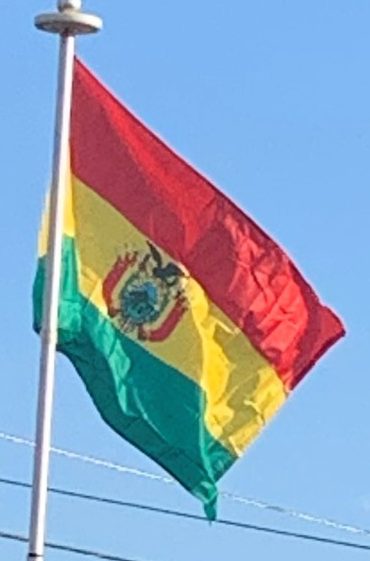The geography of the country exhibits a great variety of terrain and climates. Bolivia has a high level of biodiversity, considered one of the greatest in the world, as well as several ecoregions with ecological sub-units such as the Altiplano, tropical rainforests (including Amazon rainforest), dry valleys, and the Chiquitania, which is a tropical savanna. These areas feature enormous variations in altitude, from an elevation of 21,463 feet above sea level in Nevado Sajama to nearly 230 feet along the Paraguay River. Although a country of great geographic diversity, Bolivia has remained a landlocked country since the War of the Pacific. Puerto Suárez, San Matías and Puerto Quijarro are located in the Bolivian Pantanal.
The Andean region in the southwest spans 28% of the national territory, extending over 118,766 square miles. This area is located above 9,800 foot altitude and is located between two big Andean chains, the Cordillera Occidental (“Western Range”) and the Cordillera Central (“Central Range”), with some of the highest spots in the Americas such as the Nevado Sajama, with an altitude of 21,463 feet, and the Illimani, at 21,201 feet. Also located in the Cordillera Central is Lake Titicaca, the highest commercially navigable lake in the world and the largest lake in South America; the lake is shared with Peru. Also in this region are the Altiplano and the Salar de Uyuni, which is the largest salt flat in the world and an important source of lithium.
The Sub-Andean region in the center and south of the country is an intermediate region between the Altiplano and the eastern llanos (plain); this region comprises 13% of the territory of Bolivia, extending over 55,141 square miles, and encompassing the Bolivian valleys and the Yungas region. It is distinguished by its farming activities and its temperate climate.
The Llanos region in the northeast comprises 59% of the territory, with 250,257 square miles. It is located to the north of the Cordillera Central and extends from the Andean foothills to the Paraguay River. It is a region of flat land and small plateaus, all covered by extensive rain forests containing enormous biodiversity. The region is below 1,300 foot above sea level.
Bolivia has three drainage basins:
Economy:
Despite a series of mostly political setbacks, between 2006 and 2009 the Morales administration has spurred growth higher than at any point in the preceding 30 years. A surplus budget of 1.7% (GDP) was obtained by 2012, the government runs surpluses since Morales administration reflecting a prudent economic management.
A major blow to the Bolivian economy came with a drastic fall in the price of tin during the early 1980s, which impacted one of Bolivia’s main sources of income and one of its major mining industries. Since 1985, the government of Bolivia has implemented a far-reaching program of macroeconomic stabilization and structural reform aimed at maintaining price stability, creating conditions for sustained growth, and alleviating scarcity. A major reform of the customs service has significantly improved transparency in this area. Parallel legislative reforms have locked into place market-liberal policies, especially in the hydrocarbon and telecommunication sectors, that have encouraged private investment. Foreign investors are accorded national treatment.
